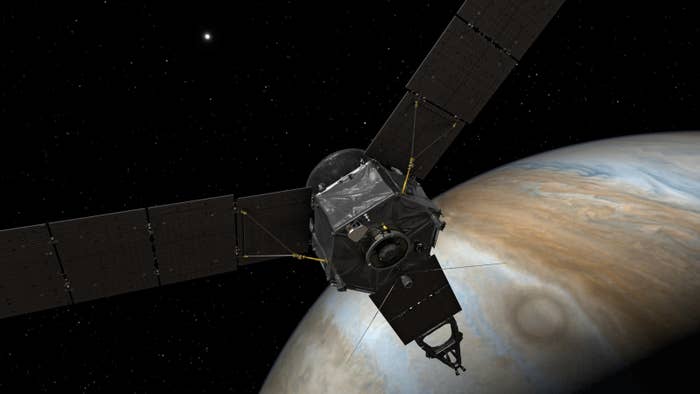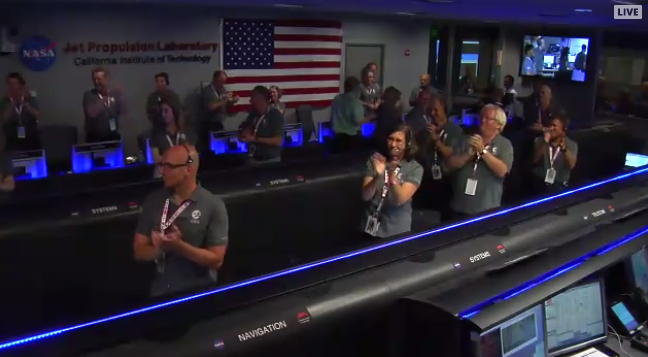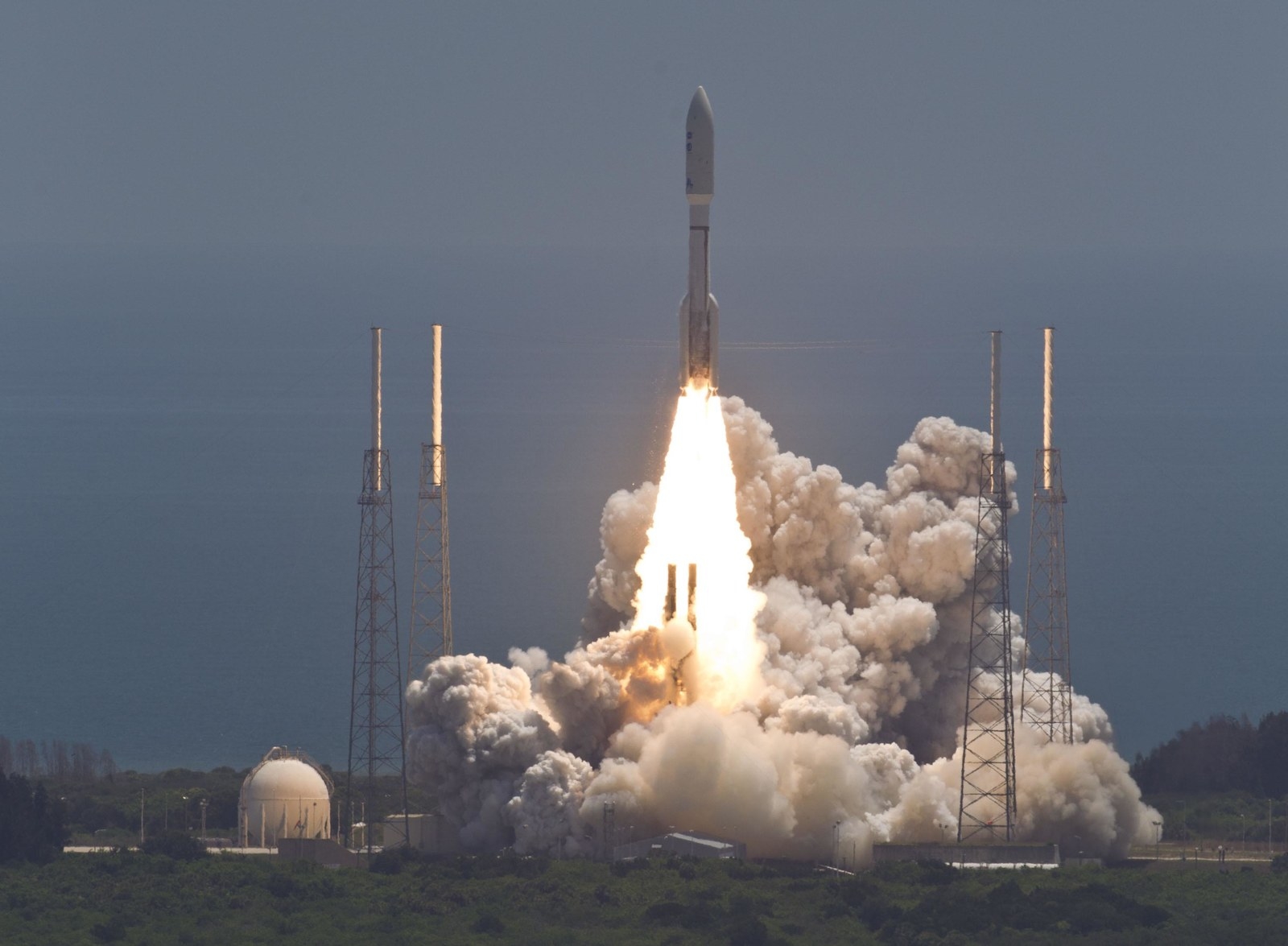
Nearly five years after it left Earth, NASA's Juno spacecraft successfully entered orbit around Jupiter Monday night.
Juno began circling the planet after an “orbit insertion burn." Applause broke out in NASA's control room Monday night as the burn finished and a nearly two-year mission to gather data about Jupiter began.
Though the spacecraft had been traveling for nearly five years, the stakes Monday night had never been higher: Had Juno overshot its mark, it would have sped off into deep space; had it come too close to the planet, it would have been destroyed. In either case, the mission would have been lost.
Main engine burn is go. I’m burnin', burnin', burnin' for you, #Jupiter.
Applause also repeatedly broke out in NASA's control room Monday night as Juno began its burn, then continued burning long enough to avoid destruction.
Mike Watkins, director of NASA's Jet Propulsion Laboratory, said on live video Monday night that the orbit "looks perfect" and that he felt a "combination of excitement and relief."
"This is the beginning of the science mission," he added.

Physicist Scott Bolton, NASA's principal investigator for Juno, said that after Juno achieved orbit the next challenge was turning back toward the sun so its solar panels could generate power.
"We’ve got to point that back to the sun so that the juices start flowing through Juno’s veins again," Bolton said on live NASA video.
NASA later tweeted that Juno had successfully deployed its solar panels.
All rays on me. My solar panels now face the sun. I’m the farthest solar-powered spacecraft from Earth. #Jupiter

Juno left Earth in August 2011 and is designed to study the composition and history of our solar system's largest planet.
The craft, which is named after the Roman goddess who was Jupiter's wife, traveled nearly 1.8 billion miles by the time it reached the planet. The goal of the mission was to use Juno to map Jupiter's magnetic and gravitational fields, atmosphere, and radiation belts.
Scientists will then use the information to study the planet's internal structure and history.
The Juno mission cost $1.1 billion. The craft is equipped with an array of instruments including a vector magnetometer and an infrared imager/spectrometer.
Juno is scheduled to orbit Jupiter for 20 months, making 37 rotations.
